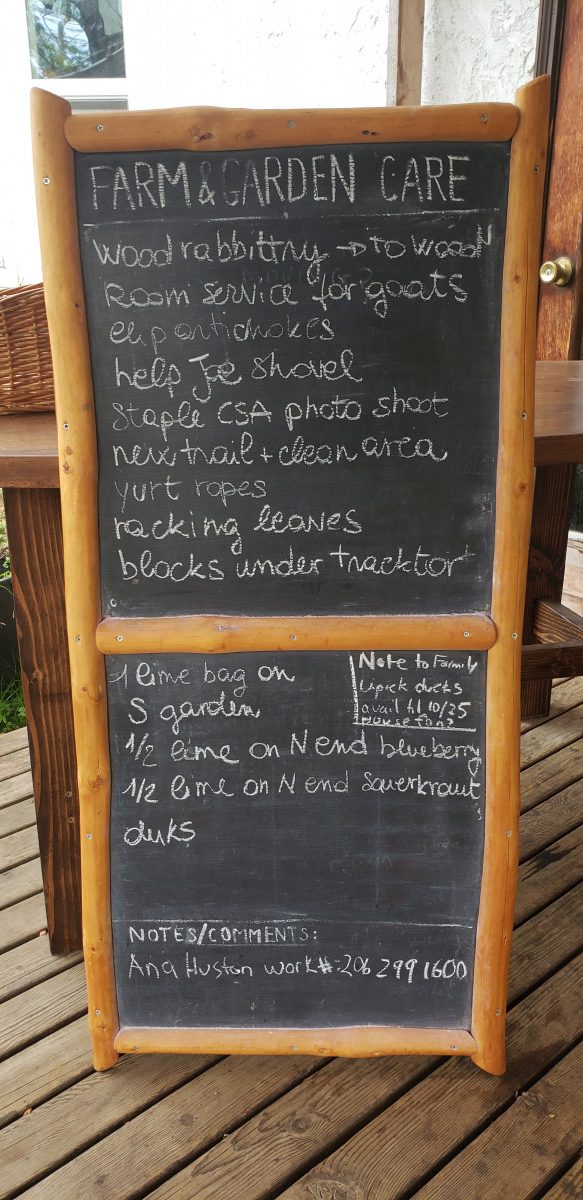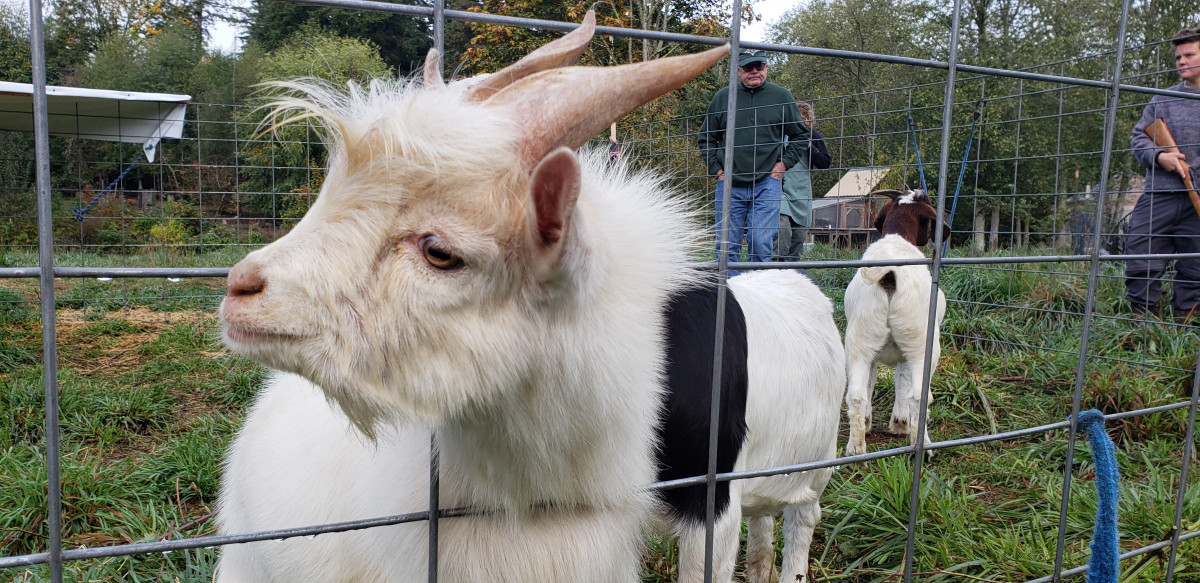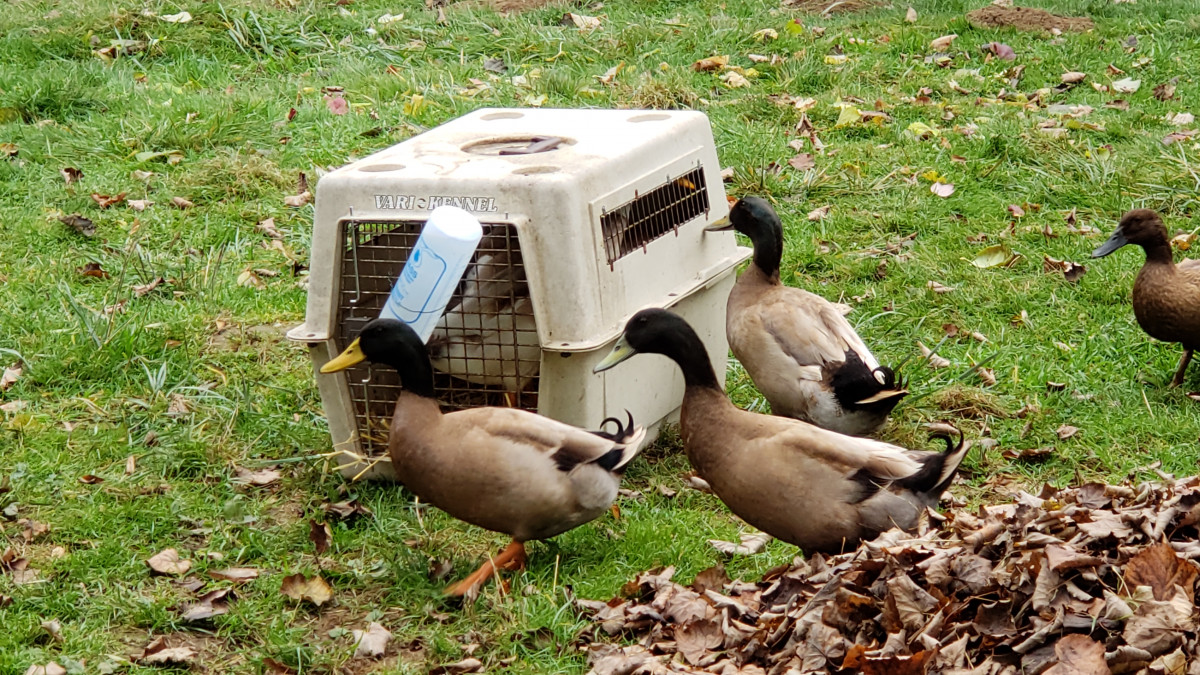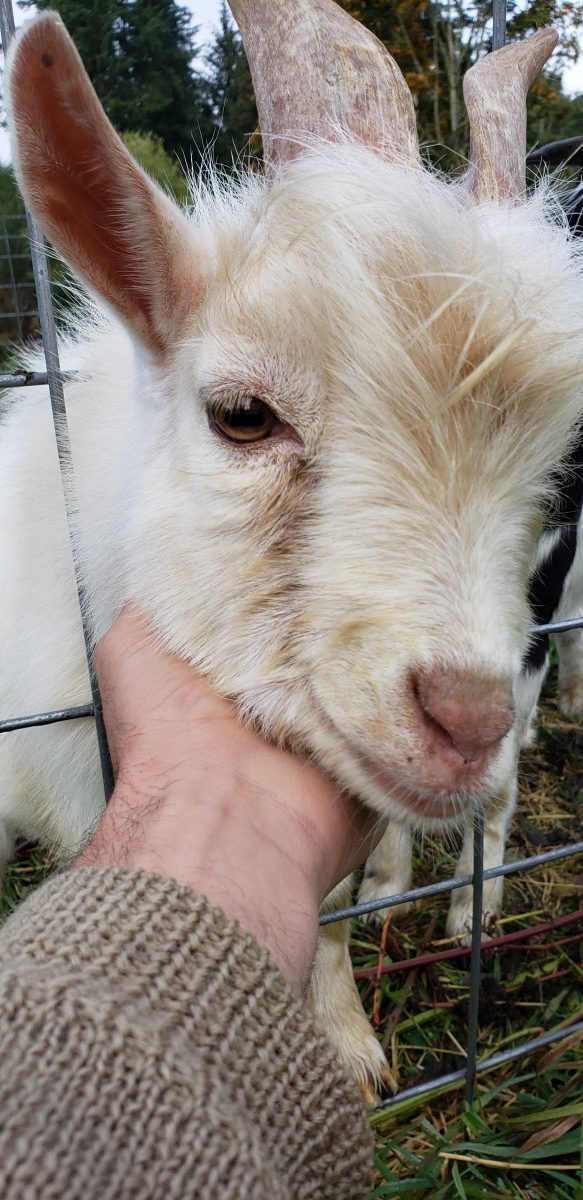As I sink myself into the seasons of life here on the farm, the realities of the autumn are setting in. The autumn is no less the beautiful decay of our summer fruit and the colorful symbolic death of the Sun. It is a time when we reap the harvest of our efforts throughout the year and reconvene with our community to tell the tales of season’s past.
My efforts this quarter are to really live in harmony with the offerings of the season. The light is diminishing significantly and our source of sight and heat must come from outside (and often artificial) sources. I’ve heard people of the past refer to your age by how many winters you’ve lived through because the fact is, if you had to be self-sufficient in terms of heat, food, shelter, etc., life would be quite the reality check this time of year. Autumn would be a time of really inventorying your life, resources, basic needs, and the environment in every way before the brutal cold (and in our case, wet) sets in.
We are doing these things in our own way here at Hawthorn Farm. We are harvesting what is left in the fields: the corn, the beans, the squash. We planted Garlic for the next season, are sowing mustards in the greenhouses, and seeding cover crops in the plots already laid to bed for the winter. From paving a trail in the woods to helping the neighbors spread cedar bark, we are putting blocks under the unused tractors, room servicing the mama goats for a winter of pregnancy, and securing our dwellings for the winter occupancy.

I’ve never known raking leaves to be anything other than a purely aesthetic chore and now I’ve been realizing how much of a resource these really are and I get to rake with a purpose. They are an incredible resource for nutrition in general and can be added to the compost to further build quality soil. We have mostly been piling that up next to the duck and compost chicken pens in order to balance out all their nutrient-dense waste. Fresh bedding makes for happy poultry, and happy poultry make happy eggs. Happy eggs make for happy people and happy people makes for a happy earth.
We just found out that our goats love maple leaves too! I know most people believe that goats will eat anything, but they can actually be quite picky and their tastes change with the seasons too. I haven’t spent too much time taking care of the goats, as my focus has been on the poultry, but I am so curious about these creatures and the unique personalities they bring to the dinner table.

Speaking of the dinner table and thee inevitable darkness, another autumnal task around the farm is the culling of the respective flocks. Historically, animals were processed in the fall, not only to stock the pantries with their bounty, but keeping them alive meant feeding them during a time when food resources are scarce.
Having 50 ducks is great, spring through the fall, as there are eggs a-plenty, but when the dark days of winter loom overhead and the ducks go on egg-laying hiatus, suddenly supplying them with premium organic feed at $30/bag doesn’t sound like a good return on investment. Ducklings from the spring can sometimes take a year to lay, but can also start in the fall. If they start in the fall, they will often lay eggs all through the winter, where the old hens will have started to take their annual break. This is another incentive to cycle out old hens, who may not be laying at all eventually, and cycle in the new ducklings who could start ovulating in time to hold over the egg quota in the winter.

I’ve eaten countless animals in my lifetime, and yet I had never killed one, or even been around people killing them before. That changed this time around the sun, as we had three male goats living in the pasture, who were not going to make it through their first winter.
From a purely practical stance, males of almost any species are of the least practical value to a farm. Having more than one of any species lends itself to diminishing returns on investment. Male goats are only really good for breeding, but most people these days “rent” a buck with good genes to come in for a short period during the breeding season. They can’t produce valuable milk or future babies, and their hormones alone actually contribute to the commonly known “goatiness” of the mama’s milk. We had an especially testosterone filled Buck visit the farm for a month, and his stench could be smelled from across the farm and his oils would stick to your clothes just by being close to him. Some males will be raised through the summer as ours did, and others don’t even make it much past the weaning stage of life. We have roosters routinely dropped off at our place by people raising chickens in the city because they aren’t even legally allowed within most city limits due to their incessant crooning. (I once counted an interval of a rooster call every 9 seconds at 4 am between all the males chiming in within the neighboring farms.) If you have too many roosters per hen, the hens suffer from all the raging testosterone and end up with bare backs. The aggression of the male ducks (drakes) is also a real danger to the hens. There is more to say about that, but males are historically the ones to be plucked first.
This brings me to my own story being a part of the circle of life and death. I could write a whole novel based on the multiple layers of rumination this process has taken for me, but I’ll keep it brief for now.
When it came time to take the lives and honor the 3 goats in our pasture, I knew that I had to be a part of the equation. When it came time to do the deed, I knew that I was ready for the right of passage in pulling the trigger. I had never shot a gun in my life before, and here I was about to have my first shot be in the direction of a living creature. The first two goats were the twins, not born on the farm, and therefore shy around people, they presented quite a challenge to the other two wranglers. My little guy was born here on the farm and therefore was all too trusting and almost too welcoming of my company.

The usual routine is to let the boys go hungry in the morning so that their stomachs are not full of food, and also so that when it comes time to give them their last meal, they are eager for it. We place a plate of grain in front of them and wait for them to distract themselves in the food and place the rifle to their head with honorable confidence. Ideally, there is only one shot needed and little to no pain felt.
I’ve been thinking about how these goats and all the other animals for that matter, only have one bad day. When it comes down to it, they only have a few bad moments in their whole life. It was surreal for me to be connecting with this living creature one moment and sitting with his residual nervous system pulsations the next, and then eventually taking him through the process all the way until lunch. I could really feel how his life left his body and when the spirit was gone, it became a lot easier to proceed with the next steps. I could also feel how much I wanted to participate even more, not less, after having taken his life. I wanted to honor his existence by using every part of him and nourishing the bones of the humans I live with and love.

I believe that if all people were required to be a part of the processing of an animal they would then consume, we would have an incredible shift in consciousness surrounding the treatment of animals. All the data on greenhouse gases and toxic waste emitted from industrial ag. cow farms sometimes can’t convince someone to change their eating habits, but I can guarantee that being a part of the slaughter would. I could see a lot of people turning vegetarian if we were required to kill the animals they ate. I also see the other side of it, where we actually want to be more involved with the natural predator/prey dynamics that nature requires. As predators, we must take life to live. Whether that be plant or animal, reverence is required and relationships evolve in being a part of the process.
I will never take my eating of others for granted again, and I will put their nutrients to good use. I owe them my life.